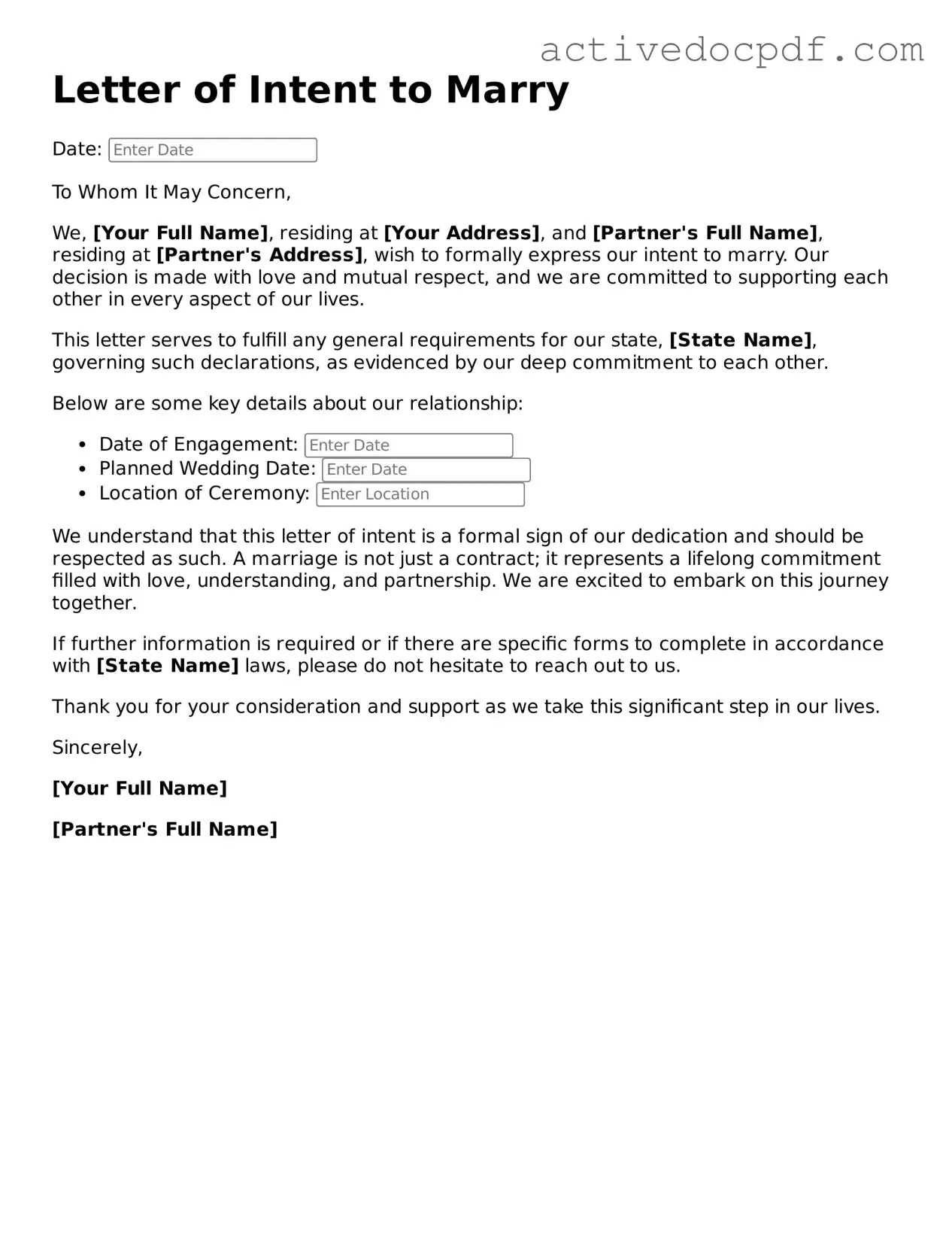What is a Letter of Intent to Marry?
A Letter of Intent to Marry is a document that expresses a couple's intention to marry in the future. It is not a legally binding contract but serves as a formal acknowledgment of the couple's commitment to each other. This letter can help clarify intentions and may be used in various contexts, such as immigration or personal documentation.
Is a Letter of Intent to Marry legally binding?
No, a Letter of Intent to Marry is not legally binding. It does not create any legal obligations or rights. Instead, it acts as a declaration of intent, which can be useful for personal or administrative purposes. Couples may find it helpful for organizing their thoughts and plans regarding marriage.
Who should use a Letter of Intent to Marry?
This letter can be beneficial for any couple planning to marry. It is particularly useful for those who may need to demonstrate their commitment for specific reasons, such as:
-
Immigration applications
-
Financial planning
-
Family or cultural traditions
Ultimately, it serves as a personal declaration of love and commitment.
What should be included in a Letter of Intent to Marry?
While there is no official format, a Letter of Intent to Marry typically includes:
-
The names of both individuals.
-
The date of the letter.
-
A statement expressing the intention to marry.
-
Any specific details about the planned marriage, such as a tentative date or location.
-
Signatures of both parties.
Couples may also choose to include personal sentiments or reasons for their commitment.
Do I need a lawyer to create a Letter of Intent to Marry?
No, a lawyer is not necessary to create a Letter of Intent to Marry. Couples can draft the letter themselves, ensuring it reflects their feelings and intentions. However, if there are specific legal considerations or if the letter is intended for a legal purpose, consulting a legal professional might be beneficial.
Can a Letter of Intent to Marry be revoked?
Yes, a Letter of Intent to Marry can be revoked. Since it is not legally binding, either party can choose to withdraw their intention at any time before the marriage actually occurs. It is advisable to communicate openly about any changes in intentions to avoid misunderstandings.
Where can I find a template for a Letter of Intent to Marry?
Templates for a Letter of Intent to Marry can be found online. Many legal websites and relationship resources provide sample letters that couples can customize. It is important to ensure that any template used aligns with personal feelings and intentions.
